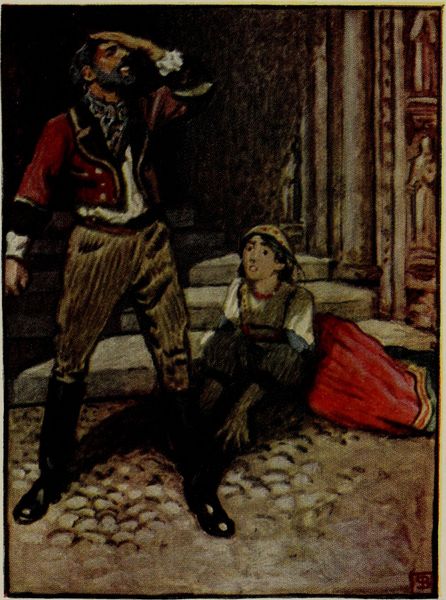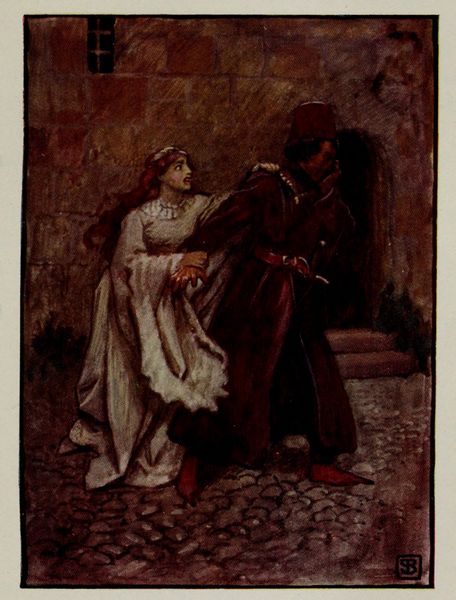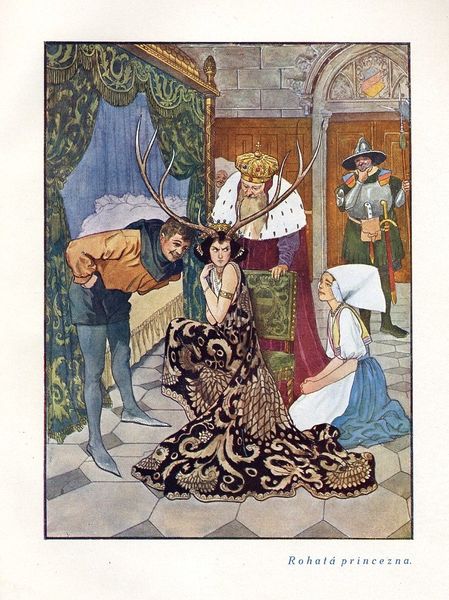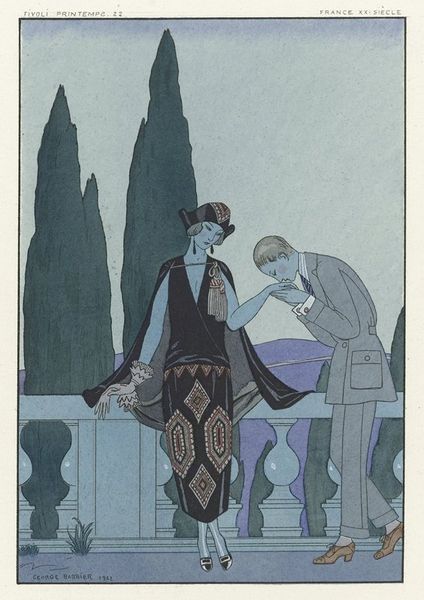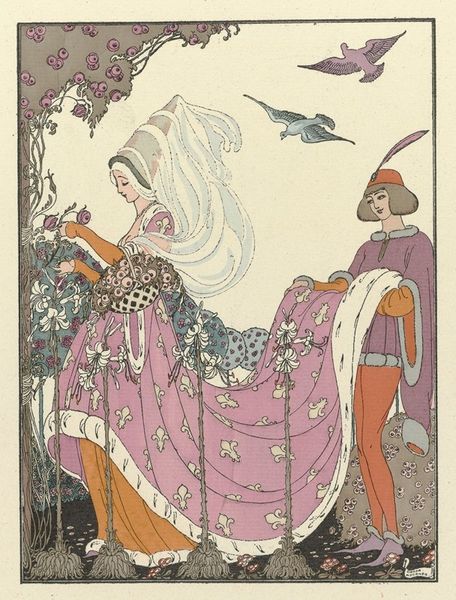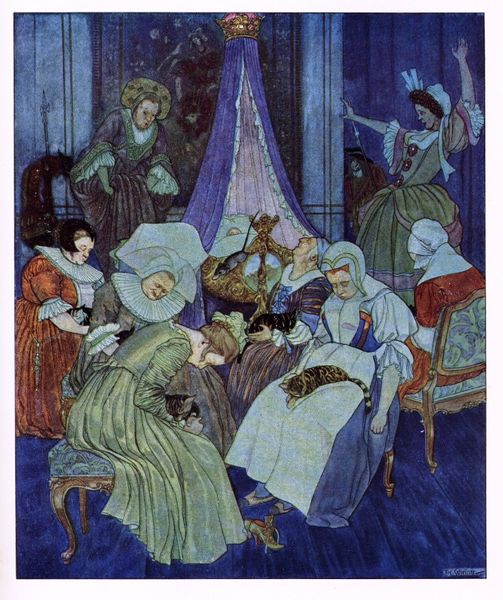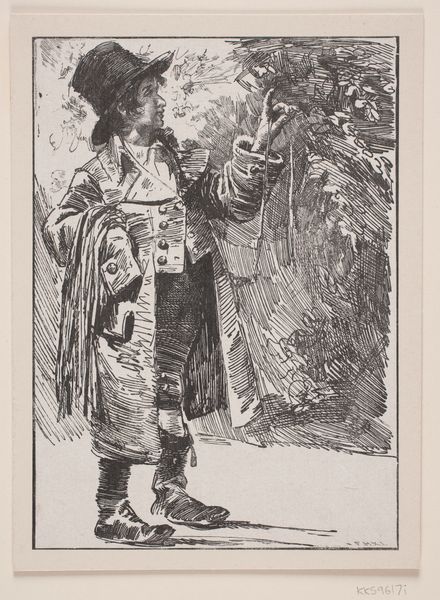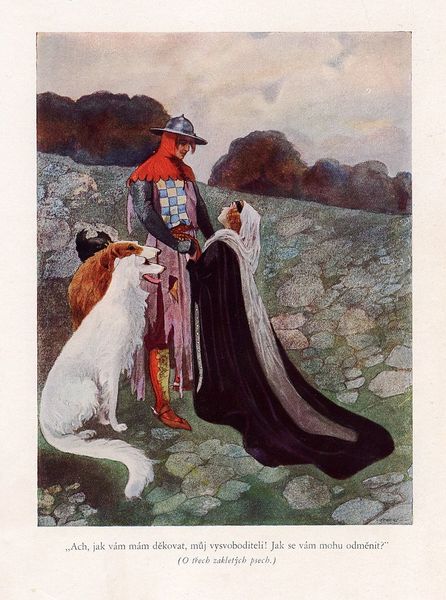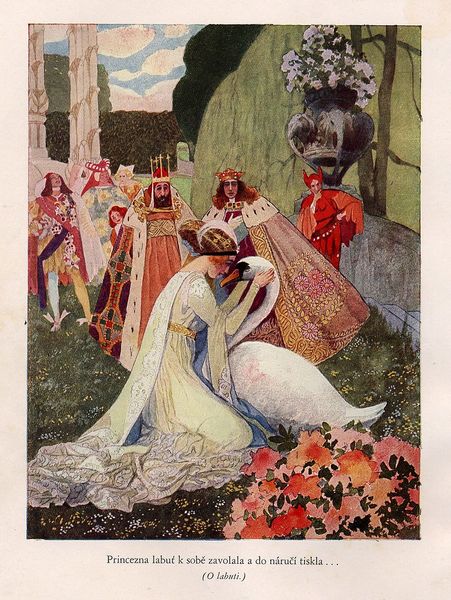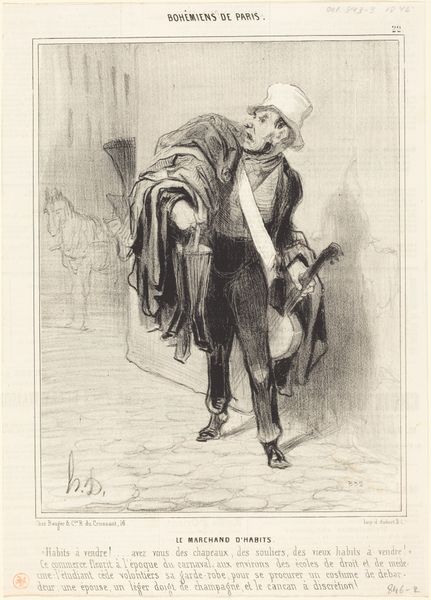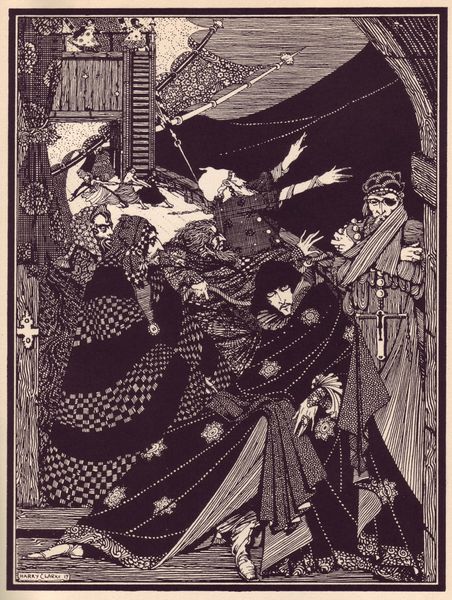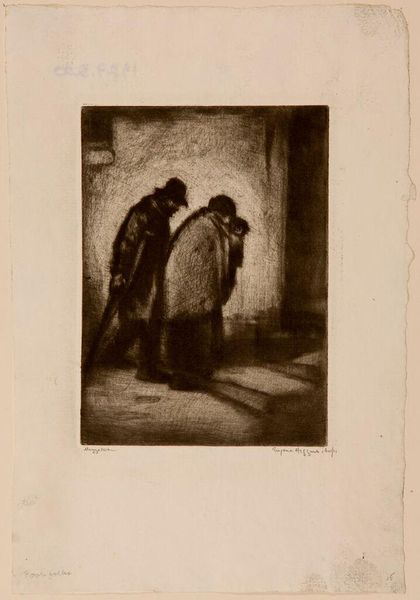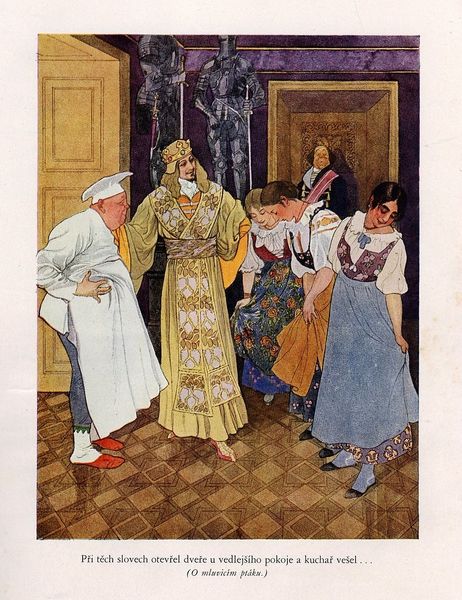
Copyright: Public domain
Editor: Here we have Artuš Scheiner’s tempera painting, "Illustration for Hamlet," from 1923. There's a distinctly eerie feeling to it; the colors are muted and cold, and the figures seem stiff and haunted. What strikes you about this piece? Curator: What’s interesting here is seeing Hamlet visualized through the lens of early 20th-century Symbolism, itself hearkening back to earlier medieval influences. Given its public role as an illustration, consider how this imagery shapes our cultural understanding of Shakespeare. The rigid figures, almost like icons, flatten the dramatic potential of the play. Doesn't it remind you of the kind of nationalist narratives popular in the newly formed Czechoslovakia at that time? Editor: That's interesting. I hadn't considered the nationalistic element. Do you think that by stylizing it in this medieval way it's an effort to ground the play within a particular cultural or national history? Curator: Precisely. It’s attempting to anchor Hamlet, a classic of English literature, within a broader, perhaps specifically Czech, historical consciousness. It frames the narrative, dictating how the public should understand not just the play but its relationship to their own identity. Also, notice how Hamlet and the ghost of his father are physically separated by the composition of this illustration: how might this comment on accessibility, reception and the dissemination of art in society? Editor: So, rather than just depicting a scene, it’s almost curating how we should *feel* about that scene, framing its reception through this very specific historical and cultural lens. Curator: Exactly. The artist becomes a gatekeeper, guiding the public’s interpretation of a cultural touchstone. This illustration then is a piece of cultural agenda setting. Editor: I see. It makes me consider how all illustrations shape our reading, often invisibly. Curator: Absolutely, and that makes me want to investigate other illustrators working during that time!
Comments
No comments
Be the first to comment and join the conversation on the ultimate creative platform.
